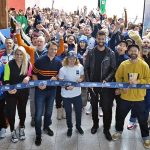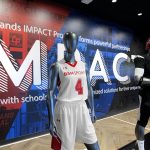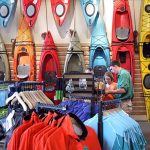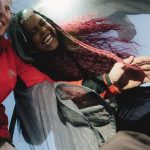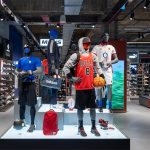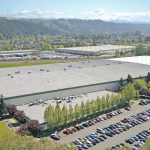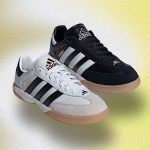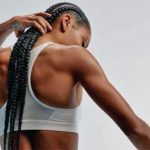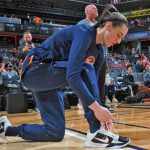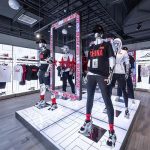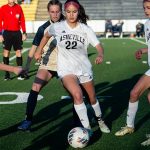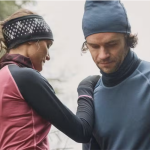The sporting goods industry saw relatively flat sales of softgoods for the first quarter, according to data compiled by retail point-of-sale service SportScanINFO. A decline in Sport Footwear sales in the first quarter ending May 3 were offset by a modest rise in Sport Apparel sales. While the continued worries over rising inflation and costs associated with it have largely replaced the discussion of the housing market, the fiscal first quarter results seemed to be most largely affected by the weather.
According to Weather Trends International, a really cold March made the first quarter the second coldest in 12 years, wettest in 10 years and snowiest in 12 years. Those extreme conditions slowed sales of warm weather footwear, but helped Sport Apparel sales by forcing the buy-now, wear-now consumer back to the stores to pick up a jacket or sweater.
The first quarter decrease in Sport Footwear sales was a continuation of the downward trend seen in the back half of 2007. Most notably, sales for December were down in the mid-singles, which left Q4 down slightly in dollars. The softness continued through first quarter 2008, with sales down in the low-single-digits, somewhat improved by the early Easter and by warmer weather late in the quarter. Units were flat for the quarter, indicating a slight decrease in average selling prices.
Every channel except the discount/mass segment struggled in Q1 in the Sport Footwear categories. Full line sporting goods and mall specialty both saw Sport Footwear sales decrease in the mid-singles in dollars, though full line was down slightly more for the period.
Basketball shoes continued their downward spiral with sales for Q1 down in the mid-teens, with the greatest weakness coming from the mall. Retro and Marquee Basketball declined in the high-singles, while performance basketball was down almost 20%. Nikes market share in basketball improved, but all other brands saw declines. The top 17 sellers were all Jordan styles, led by the latest color variation on XX3.
Running was strong again in first quarter, with sales up in the high-single-digit range. Running shoes under $80 only grew in the low-singles, while running shoes over $85 improved almost 10%. Mall specialty sales grew in the high-singles in dollars for running, while full line was up in the mid-single-digits.
Classics had the best quarter in the last few years with sales flat for the period. Nike Classics were the driver, with adidas re-launch of the Superstar not going especially well. Reports are that stores who are carrying the new shoe are liquidating it well, but it is not enough to offset the chains who no longer are allowed to carry it. Reebok Classics, which appeared to be recovering in Q4, slid backwards and ended Q1 down. Mall specialty actually saw a mid-singles gain in Classics sales during the quarter, but all other distribution channels were down.
The Lifestyle Fashion Athletic category also softened during the quarter with sales down in the mid-singles. K-Swiss, adidas, Reebok and Puma all posted significant declines, but Nike and New Balance showed growth. Market share leader Skechers was down slightly for the quarter.
The much-hyped training category showed little sign of life, with sales down in the high-single-digits for the quarter. Performance training dropped by more than a third. The Under Armour trainer only had one day of sales in the quarter, but appeared to have a solid debut. The first full week of the UA launch (week 1 of Q2) showed a mid-teens liquidation based on inventory estimates.
Wheeled footwear continued its precipitous decline with sales down about two-thirds for the quarter. Skate footwear remained the brightest spot in sales, up more than one-third for Q1.
The athletic sandal business improved in the mid-single-digit range as a very solid April offset the cold, wet – and weak – March. Crocs sales for the quarter were down mainly due to the month of March. The athletic sandal brands did well, as did Teva.
Though the cold weather hurt Sandals sales, it was a boon to the Sport Apparel business as Outerwear and Sweats/Fleece both saw double-digit sales increases for the quarter. Performance was again a strong performer with looser fitting styles selling through at a slightly faster rate than Compression.
Tops sales followed the weather patterns with Long-Sleeve Ts and L/S Active Tops both showing dollar sales gains. Short-Sleeve Ts, S/S Active Tops and Tank Tops were all down for the quarter. Active Tops saw increased average selling prices regardless of sleeve length, but T-Shirt average selling prices decreased, suggesting a consumer opting for the cheapest of the basics, but willing to splurge on sport-specific product.
Though the first quarter was relatively flattish, early results on the second quarter suggest improving results. With the weather still not completely convinced of whether it wants to be hot or cold, warm or dry, Sport Apparel has still seen sales come in flat quarter-to-date. Sport Footwear, meanwhile, has seen dollar sales for the quarter-to-date increase in the mid-singles with average selling prices rising in the mid-singles as well.

